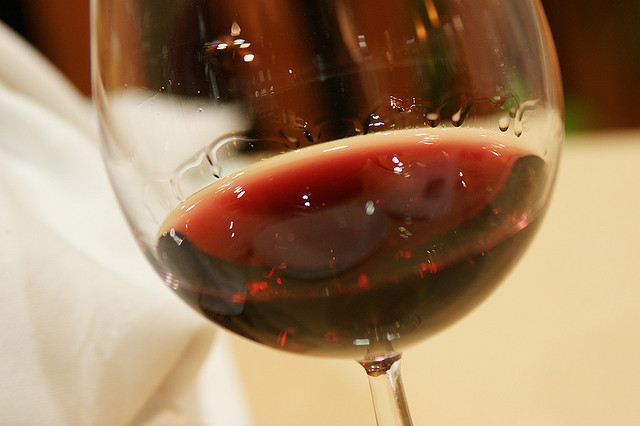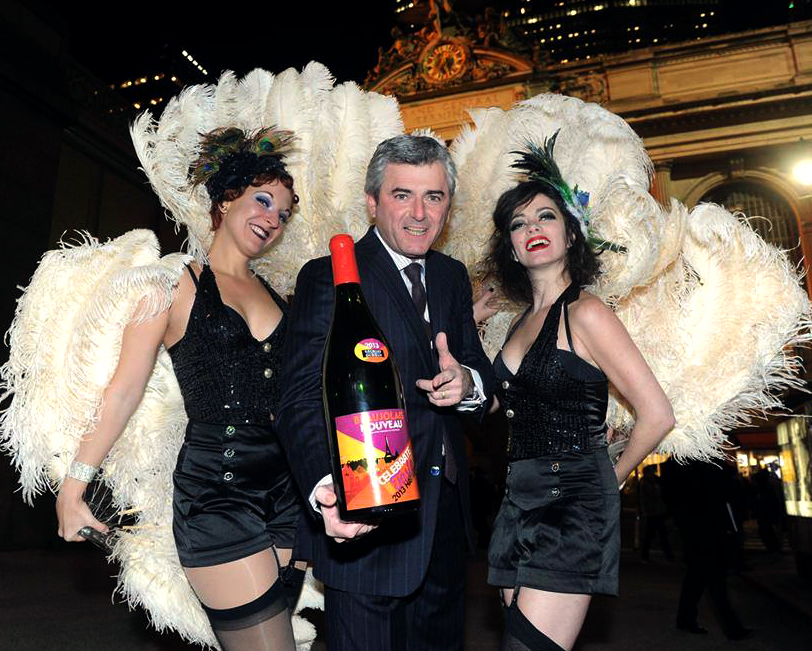Beaujolais Nouveau
Some say it’s divine and others think Beaujolais Nouveau is a scam.
Regardless of what people say, we simply scratch our heads in amazement. How do they produce and ship 30 million bottles of wine around the world within ~60 days of being grapes in a vineyard?
So, what’s all the fuss about Beaujolais Nouveau?

Beaujolais Nouveau began as an early release wine, drunk by vineyard workers, to celebrate the end of harvest. It’s official date is the third Thursday of November.
Gradually, the early release wine started to appear at local cafés and bistros in Lyon, France and other towns around the Beaujolais region. Then, the Parisians discovered Beaujolais Nouveau and the race was on. Who could deliver the new vintage harvest to Paris first?
In the early 1960’s some of the local vignerons, like Georges Duboeuf, saw potential in the easy-going tipple and decided to promote the wine with a contest to see who could get the first bottle to Paris.
From there it spread throughout Europe, and by the 1980’s North Americans had joined the party followed by Asia in the 1990’s. It’s so popular that one third of Beaujolais’ production is dedicated to the Nouveau style. There are over 35 million bottles produced and distributed to 110 countries.

Beaujolais Nouveau is just clever marketing?
Now many will dismiss the wine as simply a marketing campaign, but tell that to the over 120 villages in Beaujolais that celebrate the wine. The town of Beaujeu, after which Beaujolais is named, has a five-day festival called Les Sarmentelles revolving around the beverage. In Lyon, fireworks light up the night sky.
The wine itself is fun and simple – a fruity red wine made from handpicked Gamay grapes grown in the regions of Beaujolais and Beaujolais Village. It’s made using the process of ‘carbonic maceration’ and bottled a mere 6 – 8 weeks after harvest. This method produces a wine that is very low in tannin with high acidity. Look for lush, juicy aromas of grape, light raspberry, cranberry, candied fruits (bon-bon), fig, banana, and even bubblegum.
Rumor has it that the next big thing will be a Beaujolais nouveau Rosé, so add that to your ‘to drink’ list!
When you venture down to your favorite wine store to pick up some bottles of Beaujolais nouveau, chances are you’ll find the name “ Georges Duboeuf” on the label.
One of Beaujolais’s largest producers, Duboeuf has become the premier producer of this fun and easy style of wine and distributes all around the globe..
Wine Folly was fortunate to be able to go directly to the source, Franck Dubeouf, to get the inside scoop on this year’s vintage:
Hey Franck Duboeuf!
What do you think of 2013 Beaujolais?

Franck Duboeuf in full regalia kicking off the party last night…
We were lucky to enjoy some wonderful weather in the last days of September. Sunshine and warm temperatures made for a pleasant “Indian summer” that brought the 2013 vintage to an excellent level of maturity. The 2013 vintage should be held in high esteem in terms of quality.
Besides 2013, what vintages of Beaujolais stand out to you?
2011 was a particularly spectacular vintage. This vintage proves that great Beaujolais can age beautifully.
Where else can someone find great Gamay?
As a side note, we couldn’t help asking Franck if he’d imagine making wine anywhere else in the world. Here’s what he had to say:
It’s difficult for me to stray from my true love, Beaujolais. This is where my roots, heart and passion will always live. If I must choose, however, Oregon is a fascinating region in their experimentation with Gamay.
Whoa. Go Oregon!
It’s young, it’s fun and it’s fruity – it’s Beaujolais Nouveau!